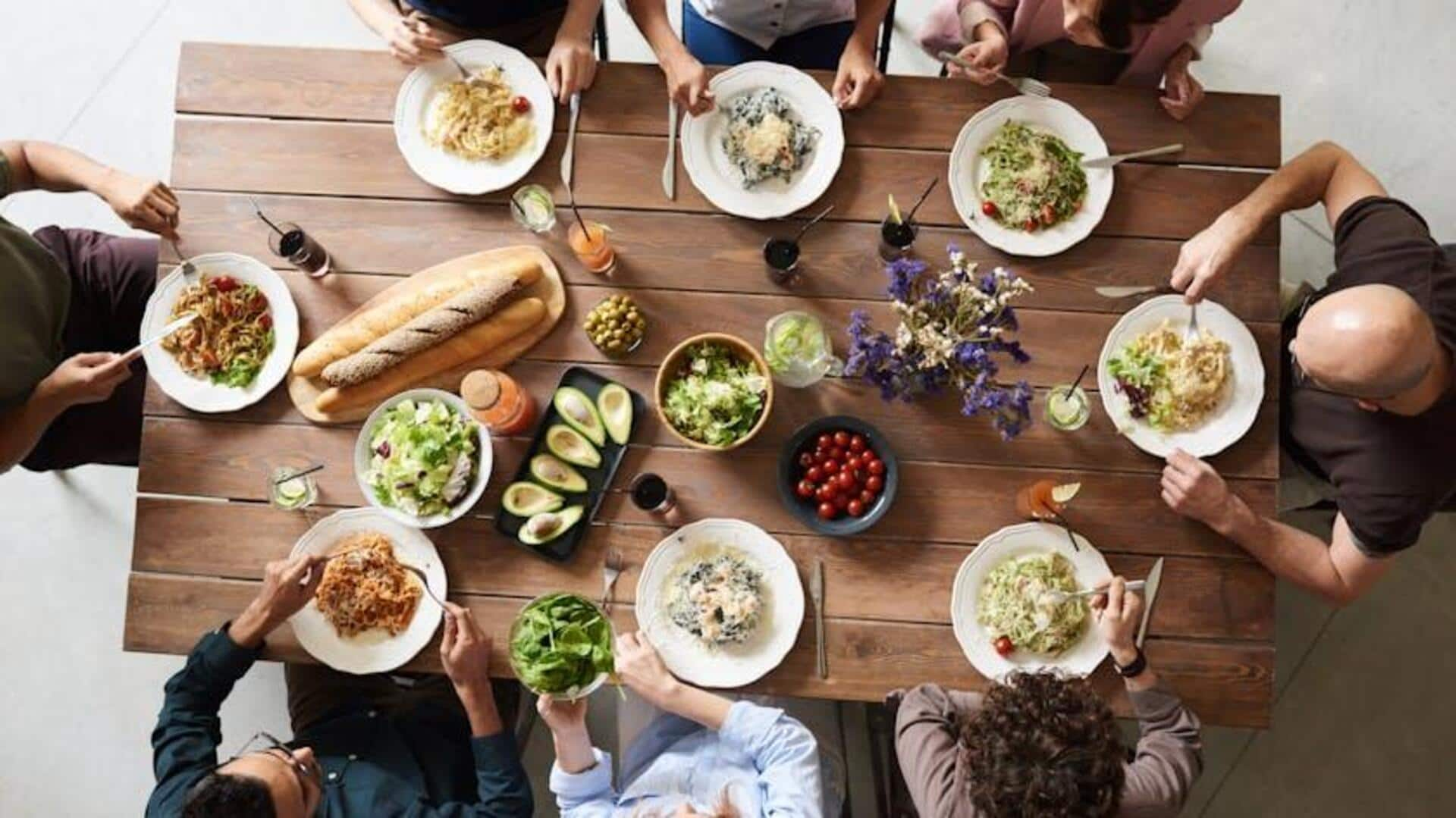
5 table manners you should know
What's the story
Dining etiquette is an essential aspect of social interactions, whether at a formal event or a casual gathering. Understanding and practicing proper table manners can make a significant difference in how one is perceived by others. This article revisits five key dining etiquette rules that are often overlooked but remain crucial for maintaining decorum at the dining table. These guidelines will help ensure that your dining experience is pleasant and respectful for everyone involved.
Utensil etiquette
Proper use of utensils
Using utensils properly is the first step to good table manners. Work your way from the outside as each course arrives. Forks are generally on the left, knives and spoons on the right. When you take a break from eating, lay the utensils on the plate in an inverted V shape to indicate you're not done. When done, lay them parallel on the plate to show you've finished your meal.
Napkin Protocol
Napkin placement and usage
Napkins should ideally go on your lap soon after being seated. Use it to lightly dab your mouth when required, steering clear of any excessive wiping motions. If you have to leave the table for a bit, place the napkin neatly on your chair, as a signal that you will return. At the end of the meal, fold it loosely and place it to the left of your plate.
Conversational conduct
Handling conversations at dinner
Engaging in polite conversation during meals is not just encouraged but also part of good table manners. It's important to choose topics which won't lead to disagreements or make other guests uncomfortable. Always listen actively to what others are saying, maintaining eye contact, and avoid interrupting them mid-sentence. This way, you can ensure a pleasant dining experience for everyone at the table.
Space awareness
Managing personal space at table
Respecting personal space while dining is imperative for everyone's comfort at the table. While it is important to keep elbows off the table during the meal, except when resting between courses, if you're engaging in conversation, leaning forward slightly for better engagement with fellow diners across larger tables is acceptable. This balance ensures a comfortable dining experience without encroaching on others' space.
Eating tempo
Appropriate eating pace
Keeping a proper eating pace is essential to dining harmony, particularly when sharing multiple courses. Eating too fast or slow can upset the flow and comfort of the meal for all those involved. It's important to keep up with the pace of fellow diners, ensuring a balanced and enjoyable mealtime experience. This makes everyone feel united and respected, elevating the communal dining experience.